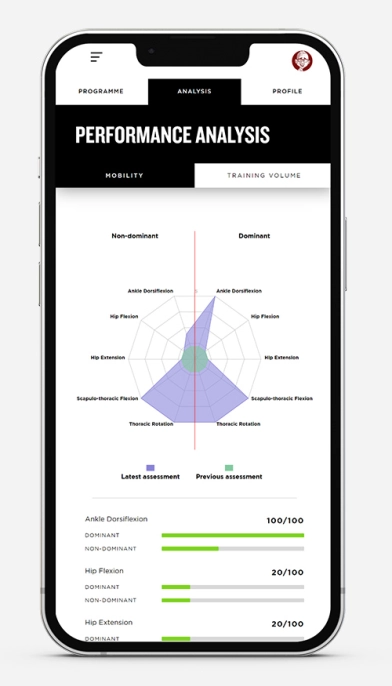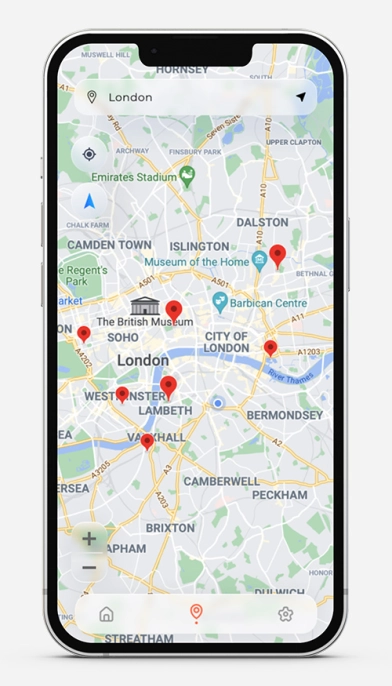Whether it's websites, apps, online marketing, video, social media, or other digital technologies it is no secret that our global society is thriving on technology. But what are the trends that really matter, and how will these trends impact your marketing? This articles takes a look at the latest market statistics around web and mobile tech trends and draws conclusions about what they mean and how businesses should be responding to them in the months (or years) to come.
Social media usage
It's always interesting to compare how different age groups are using the web. Though technology choices can change over time it can be a good idea to look at what the younger generation are doing as an indicator to what going to happen in the future, after all at some point they will all grow up! Here is a graph showing how people between the ages of 12-24 use social networks compared to the whole population (which includes everyone over 12yo):
Source: MarketingCharts Date: March 2014.
With the exception of LinkedIn there is quite a gap between the market as a whole and the younger people's use of social media. The younger generation are embracing technology much more than the older generation. The impact of this could be profound in years to come but the effects can already be seen in the marketplace. For example in 2013 Blockbuster (a DVD rental business) went into administration due to its failing business model, it's failure can be put almost entirely down to peoples preference to download content digitally with online services such as Amazon Prime and Netflix replacing the way people view movies and TV. I think we can expect to continue to see this sort of shake up moving forwards in industries such as newspapers and broadcast television (Which you will see is supported by smartphone usage data later in this article).
We were interested to see the growth in Facebook video views per day in Q1 2015 compared to Q3 2014. In just 6 months the amount of video views grew 400% from 1 billion to 4 billion video views per day:
The exact reason for this grow is not fully understood, however it could have something to do with Facebook releasing video ads at the start of 2014 as a new means of advertising on the platform.
YouTube
Operating in 75 countries across 61 languages, YouTube currently has more than 1billion users, and the amount of content these users are watching is increasing by 50% year on year. It's no surprise considering that a staggering 200 hours of video are uploaded to YouTube every minute! More than a million advertisers are using YouTube to get their message out there, most of which are small businesses.
In addition to this Cisco predicts that online video will be responsible for 80% of consumer internet traffic in 2019 (i.e. 80 percent of the total amount of data sent over the internet globally will be from online video). This figure was 64% in 2014. The popularity of online streaming services such as YouTube and Netflix are the prime reason for these numbers and P2P traffic (e.g. torrent) are not included within the figures.
As hinted on earlier, there is a clear trend in people looking to replace their normal media habits with digital alternatives and this data strongly supports that.
Although all of the data so far shows growth in overall usage of social media, there are also strong signals showing that growth is starting to slow. For example, though twitter grew by 1.4% in the last quarter of 2014, there is a steady downwards trend in its monthly active user growth:
This puts Twitter's current monthly active user base just shy of 300 million users. Twitter put the slow in growth down to a bug in Apples iOS operating system release:
Why Twitter's Growth Is Slow: 1. People tried, gave up 2. Starting with 0 followers sucks 3. Many think they lack "important" things to say
— Josh Constine (@JoshConstine) February 5, 2015
Though this may be partially true I'd be more concerned about reaching market saturation. Though Facebook has 1.44 billion users the way that these users interact with the platform is fundamentally different and I think we are seeing a much broader uptake of Facebook over Twitter globally.
Choosing a social advertising platform
With the growing trend in mobile, social media, and video usage we think it is important that businesses consider reaching out their clients on the platform that works best for them. Consider the way that your audience are engaging with content on these platforms and put in place campaigns that are targeted based upon the interests of the demographic. Unlike conventional forms of advertising, most of these big-hitting social platforms allow you to segment who sees your ad by factors such as age, location and interests. Not only is it targeted, but it is fairly cheap too, for example a boosted post can reach roughly 1000 people for every £2.50 of spend. It is because of this low cost that we would also recommend considering creating Facebook page apps as a means to be a bit more creative as to how you launch campaigns via social media.
Mobile device and app usage
The last 6 years have seen the introduction and growth of all things mobile, let's now look at how this growth is continuing to influence peoples buying habits and general behaviour. This is going to continue to impact marketing trends in 2015.
Online sales from mobile devices
Source: KPCB Internet Trends Report 2015
Though we don't have hard and fast statistics for the reason behind the increase in online sales in India and China compared with other nations, our best guess is that it has something to do with people's attitudes towards technology. In developing countries it isn't as common for everyone to have a personal computer or laptop, yet you will find that most people own a smart phone. This difference in popularity of each platform should be taken into account by any business looking to go global, especially if they are looking to reach their clients using digital channels.
Growth of mobile and tablet use in the UK has proved powerful enough to give most businesses the impetus to invest in making their websites or applications mobile friendly, this need is even more exaggerated in marketplaces where the populous are even more reliant on mobile technologies. If you are looking to invest in different territories then you should understand the way that people are likely to be engaging with the technology around your business and its products / services. China now have over 1.26 Billion mobile users and your western social media channels such as Facebook and Twitter aren't even supported or used in China. Instead they have their own Chinese versions such as WeChat and Weibo (Source PingPong Digital Chinese social media).
Common smartphone activity
Most people (~80%) who have a smart phone will use it as a sat-nav, to check up on the news, and to learn about new devices:
Though it seems obvious, the sat-nav is the digital replacement to a map, and digital news is the replacement to the newspaper, and emergency help and transport info are replacements for the phone book. These are more well-known and long standing examples of how people are seeking to replace traditional tools and ways of doing things with digital alternatives.
eCommerce and mCommerce (Mobile eCommerce) statistics
Let's go a little bit closer to home and take a look at UK eCommerce sales figures. A June 2014 report predicted 2014 UK online sales to be £52.2 billion, and 2015 to be £59 billion (a growth of 13%), with year on year growth continuing at a linear rate into the future:
If we compare the graph trends we can also see a faster growth speed in mobile eCommerce sales with a predicted sales increase from £14.1 billion in 2014 to £18.29 billion in 2015, nearly 30% growth.
Below is a graph showing the actual and predicted growth of mobile eCommerce sales from 2012 to 2018 (Source: eMarketer):
Most adults these days own a smart phone (a recent GlobalWebIndex report suggests that among adults 80% now own a smartphone), so there is a clear correlation between the numbers of phones in the market and online sales. The next driver is the difference in the way that different generations are using technology, a Pew Research Centre report conducted a Teens and Technology study that shows that one in four teens are mobile-only internet users. What's more it showed that 95% of teenagers are online compared with 77% of people aged betweeb 50-64, and only 52% for people over the age of 65.
Though this graph only goes up to 2012, based upon the other things we have discussed so far it is fair to expect to see a continued trend in this data through to today, and we certainly wouldn't expect to see a regression. As this younger generation matures and the older generation drop off of the data (for use of better words!) the average number of internet enabled people must be set to increase. Businesses should also be aware of this up-and-coming generation when considering their own systems, and as time passes their employee base are becoming increasingly better at using new technologies. We expect to see a continued growth of cloud based applications as well as a greater shift towards consumer use of mobile devices to perform tasks that would normally be done on a desktop computer.
Mobile app usage
Whilst on the topic of mCommerce v.s. eCommerce, here is a breakdown of the most commonly used and installed apps of this year. Quettras Q1 2015 report shows that the top apps for this year so far are:
|
By usage:
|
And by install:
|
There is a clear trend here for social media applications being the largest time-consumers when it comes to how people are using their smart devices. This data becomes even more interesting when you consider that a recent GlobalWebIndex report suggests that among adults 80% now own a smartphone. Looking at more recent technologies they also reported that 7% of those surveyed (of a 170k sample) said that they owned a smart-watch.
These platforms have huge user bases (e.g. Facebook has nearly 1.5Bn active users and Twitter has nearly 300m) and supports targeted and relatively cheap forms of advertising. Any business not embracing these platforms should take some time to calculate and compare the return on investment of the old v.s the new, with an average magazine advert costing £500 for a half page spread, even with readerships as low as 20,000 it's hard to resist moving the spend to a social media budget and displaying your advert to millions instead.
iOS vs Android
As of March 2015 we can see that Android is the most popular mobile operating system in terms of sales volume with total sales accounting for 52.9% of the market, followed by Apple's iOS with 38.1% market share.
What's interesting about this data that only 9 months ago Android market share was at 60.6% and Apple's iOS was at 28.5%:
So although android is still dominant, there has definitely been a growth shift back towards iOS in terms of sales. We think this may have had something to do with the launch of the iPhone 6 in September 2014. Being in mobile app development ourselves, this market share is an important metric for us as every business looking to embark on a mobile app project needs to consider which platforms they wish to support and whether to develop platform specific "native" apps or cross platform "HTML5" apps.
This will probably have an impact on marketing tends in 2015 and beyond. We find that most clients who want an app developed immediately think that Apples iOS platform is the most important platform. Though it could be argued that android users use their device differently to Apple users, we don't think Android's near 40% larger market share can be ignored. As a result we tend to have a preference for HTML5 driven mobile apps to native, though it does depend on the application and it's functionality as there are some compromises. The biggest benefit with the HTML5 approach is that you can essentially develop the application once and deploy to all of the major platforms, whereas with native apps you need to develop a whole new app for each platform. Reducing the development time and maintenance overhead of developing multiple different apps for different platforms by developing a HTML5 app can yield as much as a 50-75% development cost saving compared with the native alternative.
Attitudes towards mobile devices
According to research conducted by Mitek and Zogby 86% of 18-34 year olds keep their smart phone by their side 24/7 and 60% think that in 5 years everything will be done on mobile devices.
Unlike the personal computer revolution, the smart-device revolution is fundamentally changing our relationship with technology. They are highly personal devices that are a core part of their day to day lives.
Conclusion
The data in this article shows growth in a few key areas: Social media use, online video consumption, smart phone use and positive attitudes towards technology. With the growth in use of these technologies also comes the growth in the ability to monetise them or use them for business benefit. It is becoming ever more important for businesses to operate in a way that is mobile friendly from having a responsive mobile-friendly website design through to developing business applications that work seemlessly on mobile devices (whether that be via a mobile or web app).
As time progresses this data indicates the need to modernise old software is going to grow with it. Companies that try to hold onto old methodologies risk being overtaken by those who are prepared to innovate and embrace new trends.
If you are looking to make the most of web and mobile technologies within your business then please contact us, even if it is to just bounce around some preliminary ideas we can help you to put together a digital strategy that embraces these new technology trends.








